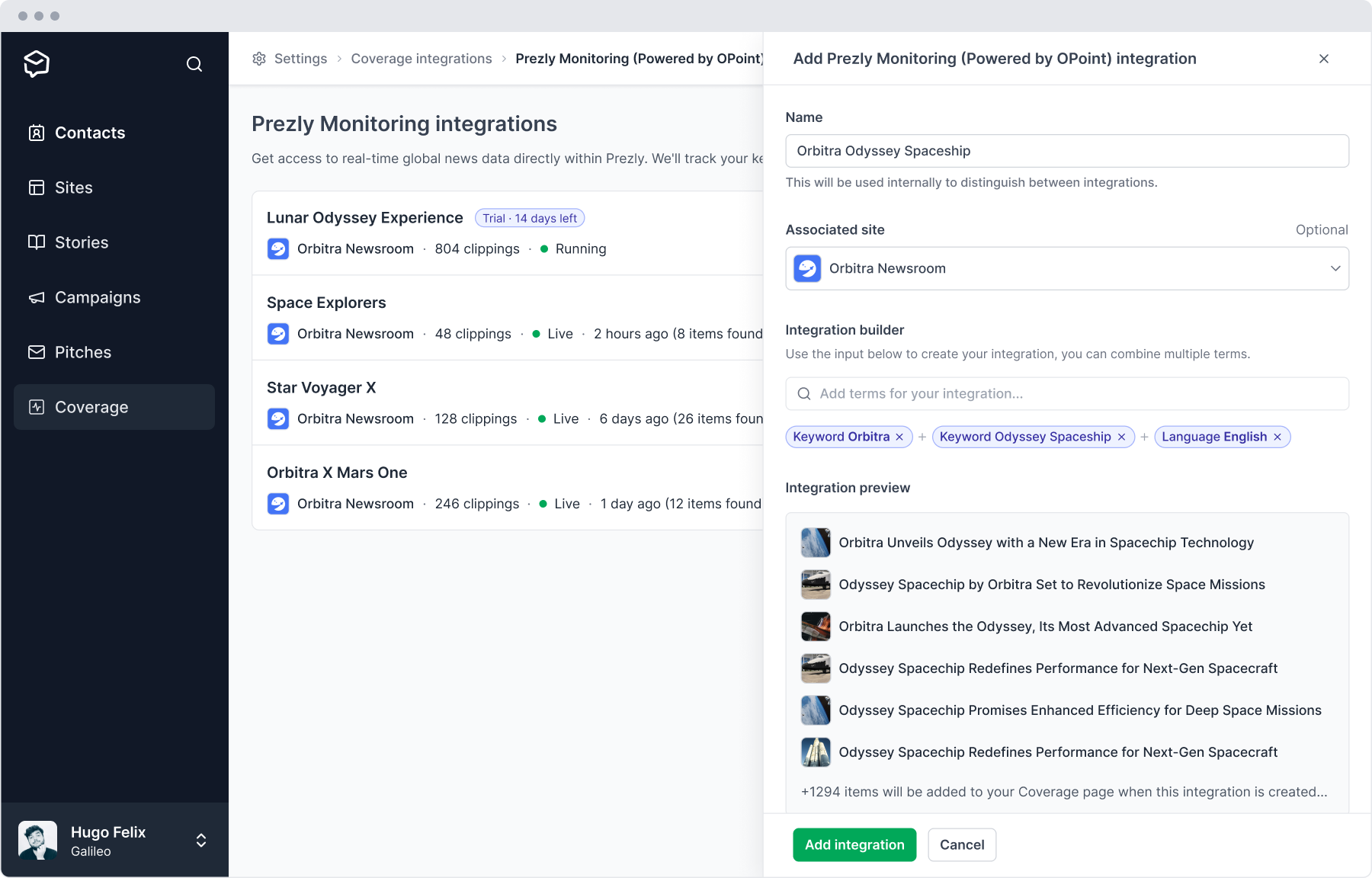Crisis Management Tools: The 3 Essential Ones Everyone Needs
When a crisis hits, every second counts. The right tools help you catch problems early, respond fast, and protect your reputation.
A PR crisis can escalate in minutes – whether it’s a social media backlash, a data breach, or a public misstep. The faster you respond, the better your chances of controlling the narrative.
The right crisis management tools help PR teams monitor conversations, coordinate responses, and communicate clearly under pressure. Without them, even a small issue can spiral into a reputational disaster.
This guide covers the essential crisis management tools, how they work, and how to use them to protect your brand when it matters most.
Crisis management is about preparing for and responding to events that could disrupt operations, damage reputation, or impact business stability. A strong crisis plan helps organizations act quickly, minimize harm, and maintain trust with stakeholders.
Issues can escalate fast, especially with social media amplifying public reactions. Having a clear crisis management strategy ensures teams know how to respond, communicate effectively, and keep the situation under control.
A crisis communication plan is key to managing information flow. It provides a structured approach to handling a crisis and keeping messaging consistent.
Different crises require different approaches. Some common types include:
- Natural disasters – Earthquakes, floods, and hurricanes can disrupt operations and put employees at risk
- Product recalls – Faulty or unsafe products can lead to recalls, damaging trust and financial stability
- Cyber attacks – Data breaches and hacks can compromise sensitive information and erode customer confidence
- Reputational crises – Negative media coverage, social backlash, or public missteps can harm an organization’s image
- Financial crises – Economic downturns, mismanagement, or fraud can threaten business stability
Each crisis calls for a tailored response. A well-prepared organization understands the risks it faces and builds a crisis plan that ensures business continuity, no matter the situation.

Or, what to do with all those lemons.
Crisis management tools are software and strategies designed to help organizations handle PR crises effectively. Since news spreads instantly, businesses need tools that allow them to monitor, communicate, and respond in real time.
The right tools ensure companies can act decisively and maintain public trust.
A strong crisis response requires a combination of communication, monitoring, and coordination tools. Each plays a crucial role in damage control and helps businesses navigate high-pressure situations more effectively.
Crisis management software is essential in coordinating responses during critical situations. It offers features such as integration capabilities, real-time media monitoring, and the ability to adapt response plans to evolving scenarios, enhancing organizational resilience and efficiency.
Timely, accurate communication is critical in a crisis. Crisis communication tools, such as specialized software, allow PR teams to manage communication during emergencies by sending urgent updates to media, employees, and stakeholders, ensuring that the right information reaches the right people fast.
Key features:
- Contact segmentation – Organize lists for media, internal teams, and customers
- Real-time messaging – Deliver updates instantly
- Pre-scheduled statements – Have crisis messages ready to go
- Multi-channel distribution – Send updates via email, SMS, and internal platforms
How to use it effectively:
- Set up contact lists in advance to ensure fast outreach
- Prepare crisis message templates to minimize response time
- Use automation where possible to streamline updates across channels
Recommended tools:
- Prezly – Organizes crisis contact lists and delivers urgent updates quickly
- Everbridge – Provides mass notification solutions for crisis situations
- AlertMedia – Enables real-time emergency communication
Launch your crisis comms in seconds, not hours
When the proverbial hits the fan, speed is everything. With Prezly, you can set up your emergency contact lists, crisis newsroom and email campaigns well in advance, so you'll be ready for the truly unexpected.

A private newsroom acts as a central hub for real-time updates, ensuring journalists and stakeholders have a trusted source for accurate information. It is crucial to maintain consistent messaging to ensure clear and uniform communication during a crisis, which helps in effectively managing the situation and addressing stakeholders.
Why it matters:
- Prevents misinformation by providing a single, authoritative source
- Makes it easy for journalists to access official updates
- Reduces inbound media inquiries by keeping information readily available
Best practices:
- Use a newsroom platform with private publishing to control access
- Pre-write crisis response templates for faster updates
- Include clear contact details for media inquiries
- Archive past updates to provide a timeline of official responses
Recommended tools:
- Prezly – Enables secure, private newsroom updates to keep messaging consistent
- WordPress with private access – Allows restricted publishing for crisis updates
- PressPage – Provides newsroom solutions with crisis management features
Understanding how a crisis is unfolding in real time helps teams respond appropriately. Media monitoring tools track news coverage, social media sentiment, and emerging narratives.
In the event of a social media crisis, real-time monitoring and effective engagement with the audience are crucial. Social media is a rapid communication channel that can escalate issues quickly, making it essential for brands to use crisis management tools as early warning systems for emerging problems.
Why it’s essential:
- Identifies misinformation before it spreads
- Provides insight into public sentiment
- Helps teams stay ahead of the story
- Tracks influencer and journalist engagement
What to monitor:
- News articles and press coverage – Track media mentions
- Social media discussions – Monitor sentiment and trending topics
- Competitor responses – Learn from others’ crisis strategies
- Key stakeholders’ reactions – Gauge how partners, investors, and customers are responding
Best practices:
- Set up alerts for key crisis-related terms to get real-time notifications
- Assign a team member to monitor and respond quickly
- Analyze trends over time to adjust messaging effectively
Recommended tools:
- Prezly – Tracks crisis coverage in real time for better-informed decision-making
- Meltwater – Provides AI-driven media intelligence and monitoring
- Brandwatch – Offers in-depth social listening and sentiment analysis
- Talkwalker – Tracks brand mentions and crisis sentiment across channels
Try Prezly media monitoring free for 14 days
- Automatically track your news media coverage
- Understand who is talking about your brand
- Create email reports with embedded coverage

Spotting a crisis early can make all the difference in how it unfolds. Monitoring social media, news reports, and industry discussions helps organizations catch potential issues before they escalate. Crisis management tools—such as media monitoring software—help track brand sentiment, flag risks, and provide real-time insights.
These tools allow teams to stay ahead of developing situations, respond quickly, and manage messaging effectively. Setting up alerts for key terms and assigning team members to track updates ensures that no critical information is missed.
A strong monitoring strategy helps organizations act fast, reduce impact, and maintain trust with stakeholders. Staying proactive means having the right tools in place and a team ready to respond when needed.
Even the best tools won’t help if your team isn’t prepared. A crisis management tool is essential for effectively managing crises through streamlined communication and strategic planning. Here’s how to ensure your crisis management plan is ready when needed:
Run mock crisis drills to simulate different scenarios and evaluate your team’s response. Incident management platforms, such as JIRA Service Management, play a crucial role in facilitating the coordination of response efforts during emergencies. Test your newsroom updates, messaging templates, and media monitoring setup to identify gaps before a real emergency happens.
When a crisis occurs, every second counts. Assign responsibilities in advance, such as drafting statements, updating the newsroom, monitoring social channels, and handling media inquiries.
Effective crisis communications are crucial during such times. Implementing robust communication strategies ensures that all stakeholders are informed and that the organization can respond swiftly and efficiently.
A crisis response flowchart can help ensure everyone knows their role and the chain of command.
Conflicting statements damage credibility. Ensure your press releases, social updates, and internal communications all align. A centralized newsroom helps keep messaging consistent.
Effective management tools are crucial for teams handling social media crises, as they help navigate challenges and issues arising on social media platforms.
A crisis response doesn’t end with the first statement. Continue tracking media coverage and public sentiment, and adjust messaging as needed. A comprehensive crisis communication plan is essential, emphasizing the necessity of monitoring and updating the strategy to adapt to evolving situations. Assign someone to monitor developments and respond promptly.
After managing a crisis, review what worked and what didn’t. Adjust your protocols and document key takeaways so your team is better prepared for the future.
Utilizing crisis management software can significantly aid in analyzing the effectiveness of your crisis response and making necessary adjustments.

We take a look at some of the best-managed PR crises of the past decade.
Crises are unpredictable, but preparation makes all the difference. Setting up the right crisis management tools now ensures your team can respond quickly and keep control of the narrative. A robust crisis management tool is essential for effectively managing crises through streamlined communication, real-time monitoring, and strategic planning.
Don’t wait until a crisis strikes. Set up your newsroom today with a free 14-day trial of Prezly and ensure your team is always ready.

